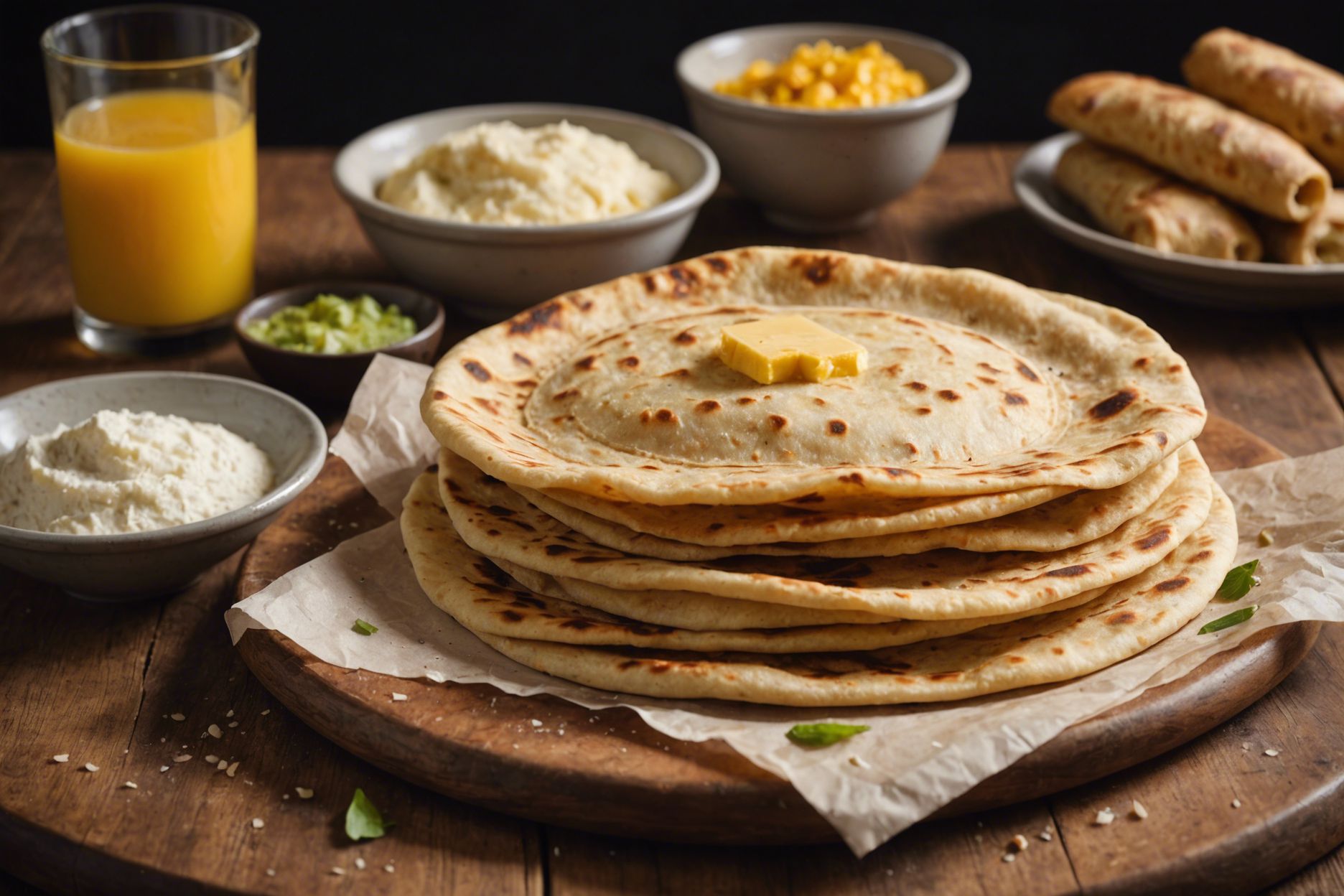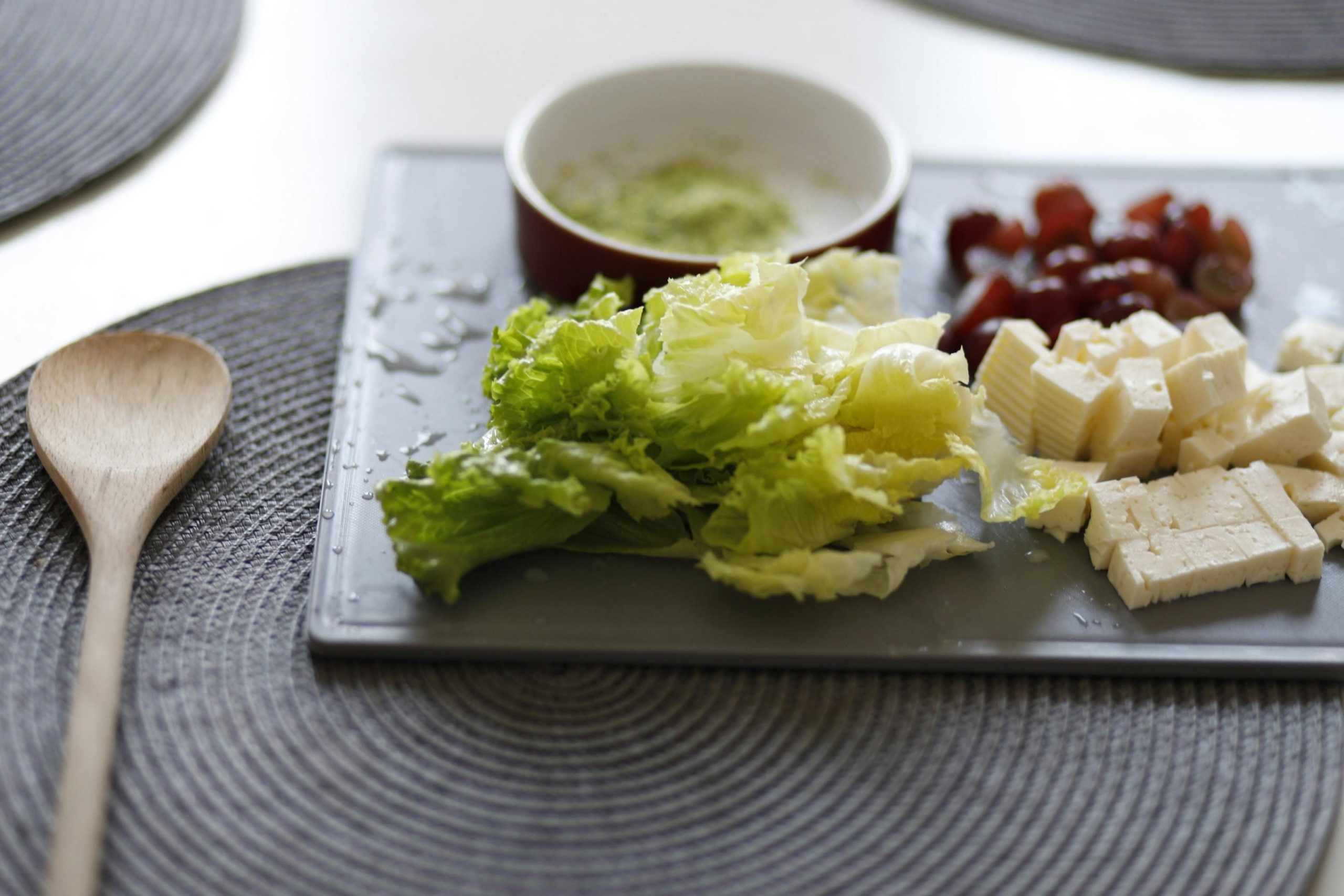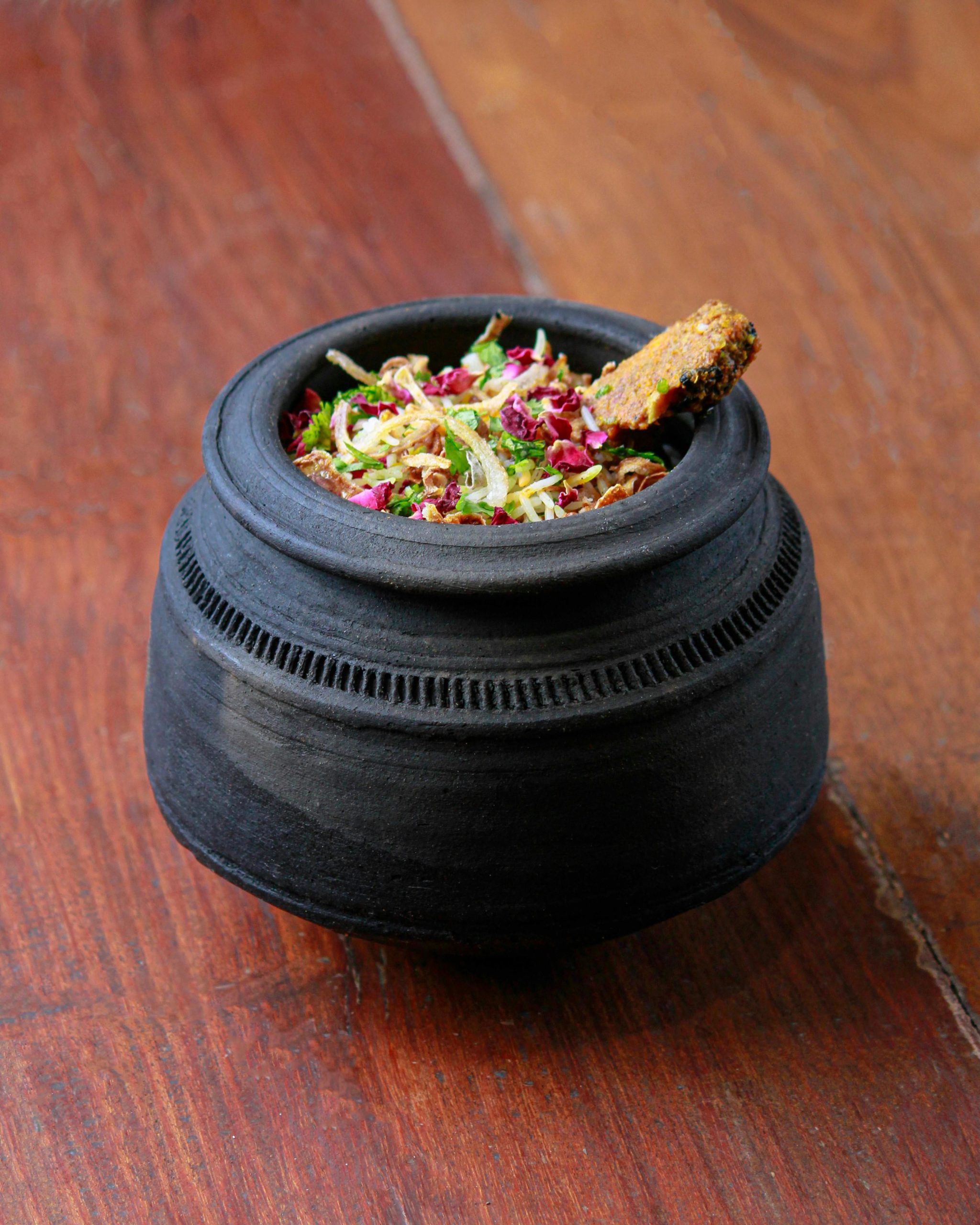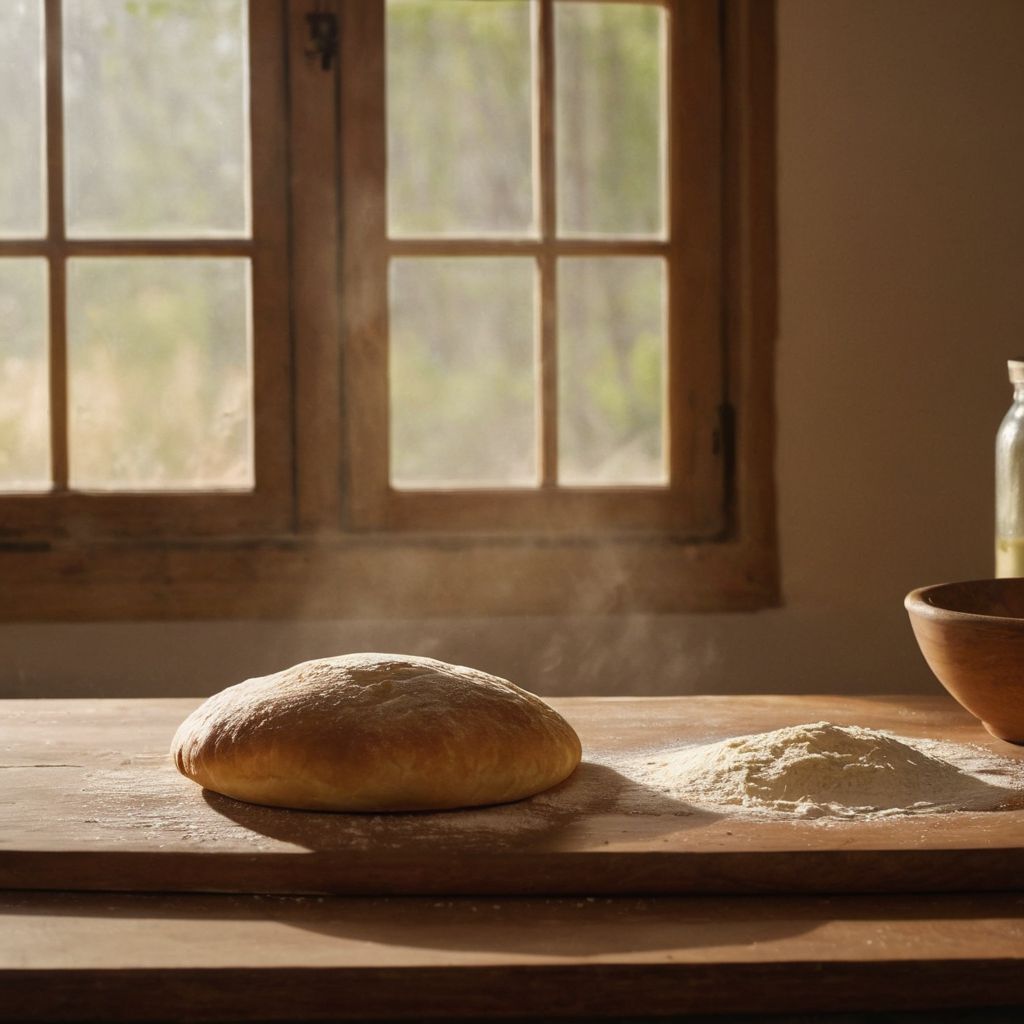Have you ever wondered how the humble ingredients of flour, water, and oil transform into a delightful culinary experience?
Finding a simple yet authentic recipe for exotic dishes like West Indian roti can often feel overwhelming.
West Indian roti is a versatile flatbread, integral to Caribbean cuisine, often stuffed with curried or stewed fillings, and perfect for soaking up delicious sauces.
In this blog, we’ll guide you through crafting your own West Indian roti, explore its nutritional benefits, understand its differences from chapati, and even delve into how you can experience these flavours on a culinary tour.
Crafting Your Own West Indian Roti: A Simple Recipe

Crafting your own West Indian roti at home is simpler than you might think. Firstly, gather your ingredients: you’ll need all-purpose flour, a pinch of fast-acting yeast, a bit of salt, baking powder, water, and some vegetable oil for cooking. These ingredients are easily available and come together to create the perfect base for your roti wraps.
Here’s a straightforward step-by-step guide to making the dough:
- In a large bowl, sift together the flour, salt, yeast, and baking powder.
- Gradually add water, about 1/4 cup at a time, kneading as you go until the dough is firm yet springy. Cover the dough with plastic wrap or a clean tea towel and let it rest for about 20 minutes in a warm place.
- After resting, knead the dough for about 90 seconds, then divide it into six even balls. Flatten each ball into a disc and roll it out on a floured surface until it’s about 10 inches wide and a quarter inch thick.
The final step is cooking your roti. Here’s how to cook them perfectly:
- Lightly brush each roti with oil and place it on a hot, flat skillet.
- Cook each side for about 2 minutes until brown bubbles start to form. Be sure to watch carefully to prevent burning.
- Remove from the skillet and allow to cool slightly before using them to wrap up your favourite fillings, such as a savoury curry stew.
Keeping It Fresh: Storing and Freezing West Indian Roti
After spending time perfecting your West Indian roti, it’s essential to know how to keep them fresh. Storing the roti properly is crucial to maintain their softness and flavour. For short-term storage, place the cooled roti in an airtight container or a resealable plastic bag. You can keep them at room temperature for up to 2 days. If you prefer to refrigerate, they can last up to a week. Ensure they are tightly sealed to prevent them from drying out.
For longer preservation, freezing is an excellent option. Freezing helps retain the quality of your roti for up to three months. Here’s how to do it right:
- First, let the roti cool completely after cooking.
- Wrap each roti individually in cling film or aluminium foil.
- Place the wrapped roti in a heavy-duty freezer bag or an airtight container before storing them in the freezer.
When you’re ready to enjoy them again, simply thaw at room temperature or reheat directly in a skillet or microwave.
The Nutritional Profile of West Indian Roti
West Indian roti, while delectable, is also packed with nutritional benefits that make it a worthy addition to any diet. Each 100g serving of this flatbread generally contains about 265 calories, primarily from carbohydrates, which are essential for energy. Additionally, it offers about 8g of protein, which is crucial for muscle repair and growth. The low fat content, approximately 6g per serving, makes it a healthier choice compared to other oil-rich breads.
The dietary fibre content in West Indian roti is particularly noteworthy, at about 5g per 100g serving, which aids in digestion and promotes a feeling of fullness. Here are some key vitamins and minerals found in West Indian roti:
- Iron and magnesium, which are vital for blood production and muscle function.
- A range of B-vitamins including B1, B2, and B3, which help in energy production and brain function.
This nutritional profile not only supports daily physical needs but also contributes to long-term health benefits, making West Indian roti a smart choice for maintaining a balanced diet.
West Indian Roti Vs Chapati: Understanding the Differences
West Indian roti and chapati, though similar in that they are both flatbreads, differ significantly in their ingredients and preparation methods. West Indian roti typically includes all-purpose flour, a pinch of yeast for slight leavening, and is often cooked with oil. This results in a soft and layered texture, ideal for wrapping around savoury fillings. In contrast, chapati is made from whole wheat flour, known as atta, and water, without any leavening agents, resulting in a denser, more fibrous bread.
The cooking process also sets these two breads apart. West Indian roti is usually cooked on a flat skillet with some oil, which helps in creating those characteristic soft layers. On the other hand, chapati is traditionally cooked on a dry skillet and then finished over an open flame, which puffs it up and gives it a slightly charred and smoky flavour. Taste-wise, chapati offers a hearty and rustic flavour, making it a perfect accompaniment for robust Indian curries, while West Indian roti’s milder taste and flexible texture make it ideal for wrapping around various types of fillings.
Discover West Indian Roti and More with INDULGE‘s Culinary Tours
If you’re captivated by the rich flavours of West Indian Roti and wish to dive deeper into the world of international cuisine, INDULGE‘s culinary tours in Zurich are your gateway to an extraordinary culinary adventure. These tours don’t just offer a taste but an immersive experience into the gastronomic traditions from around the globe, including the Caribbean’s beloved dishes. By participating, you’ll explore not only local Swiss cuisine but also get a chance to savour the authentic tastes of West Indian Roti, right in the heart of Zurich.
Each tour curated by INDULGE is designed to enlighten and entertain, from the bustling streets of Zurich West to the historical richness of the Old Town. Here’s what you can expect:
- Guided tours led by expert chefs and food connoisseurs.
- Opportunities to taste a variety of dishes, including the layered flavours of West Indian Roti.
- Engaging stories about the dishes’ origins and their cultural significance.
This unique blend of culinary discovery and cultural insights provides an enriching experience that goes beyond the usual tourist path.
Frequently Asked Questions
What is West Indian roti made of?
West Indian roti is made from all-purpose flour, a pinch of fast-acting yeast, a bit of salt, baking powder, water, and some vegetable oil for cooking. These ingredients are combined and cooked on a flat skillet to create a soft and layered flatbread.
What is Indian vs West Indian roti?
West Indian roti and Indian chapati are both flatbreads but differ in ingredients and preparation. West Indian roti includes all-purpose flour, yeast, and is often cooked with oil, giving it a soft, layered texture. In contrast, Indian chapati is made from whole wheat flour and water, without leavening agents, making it denser and more fibrous. Chapati is cooked on a dry skillet and then over an open flame, giving it a slightly charred flavour, while West Indian roti is cooked on a flat skillet with oil.








